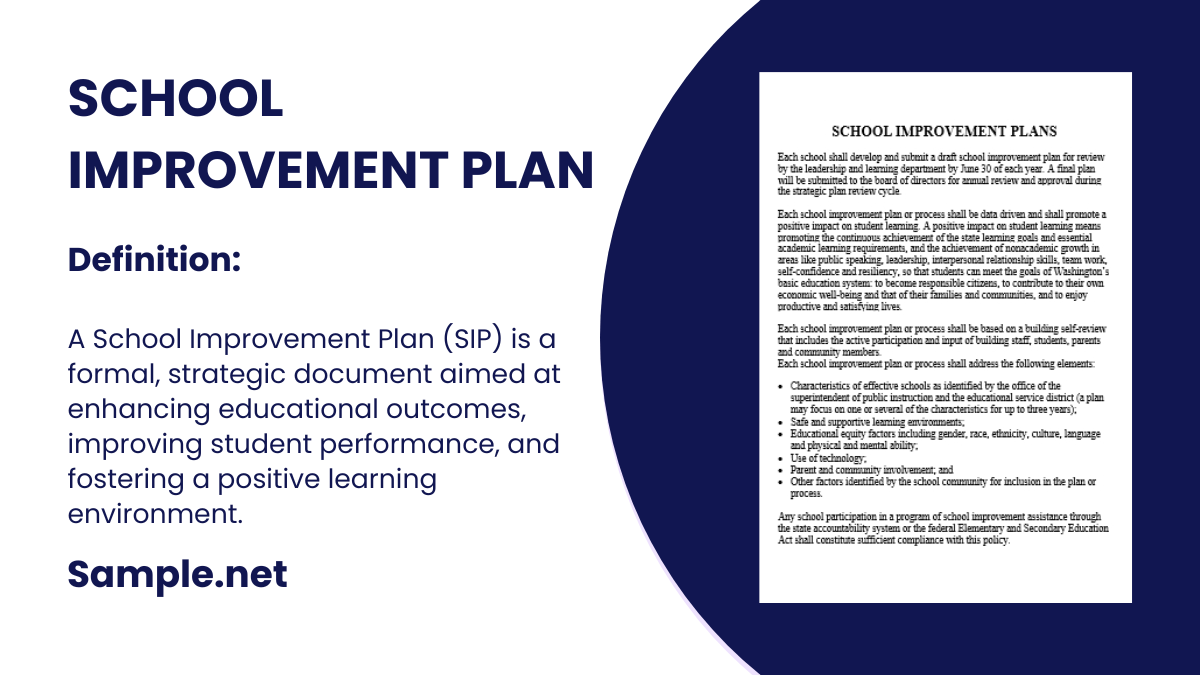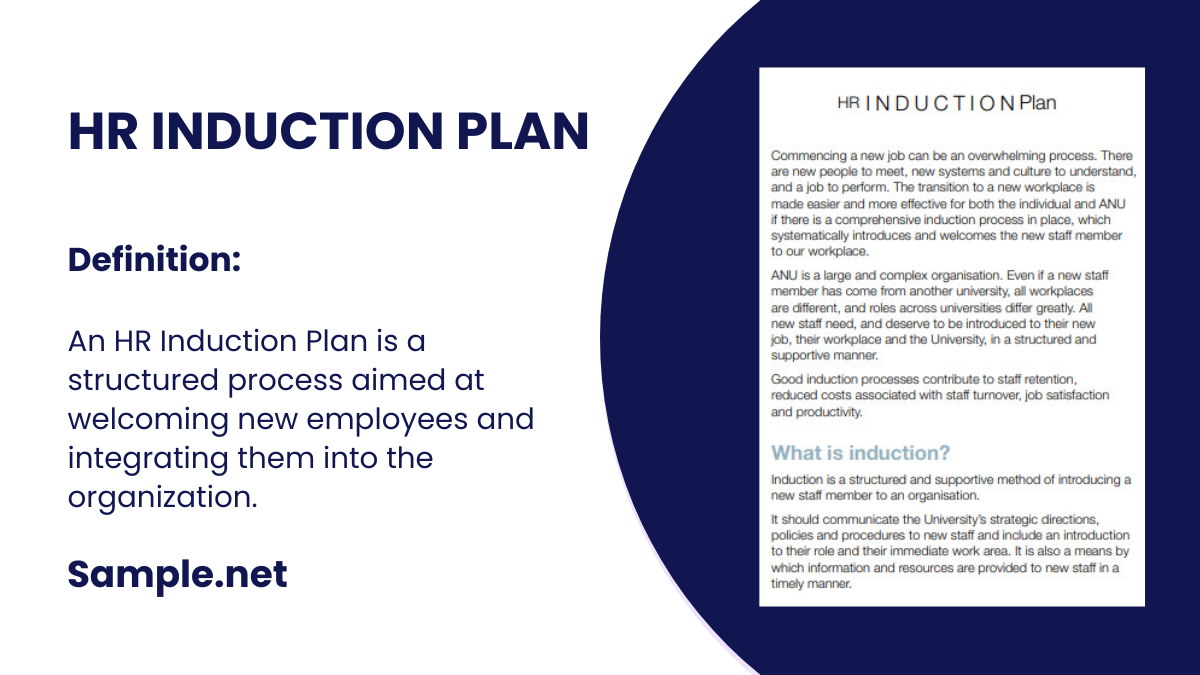A School Improvement Plan is a strategic blueprint aimed at enhancing educational outcomes for students. It outlines clear goals, targeted actions, and measurable benchmarks to ensure continuous development in…
continue reading
23+ Sample Fundraising Strategic Plan
-
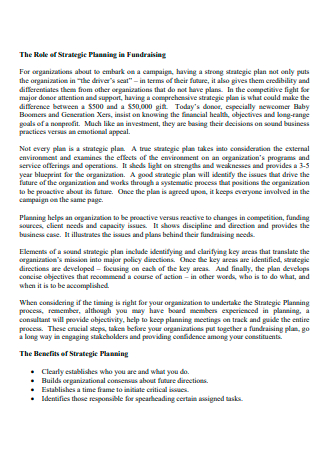
Fundraising Strategic Planning Template
download now -
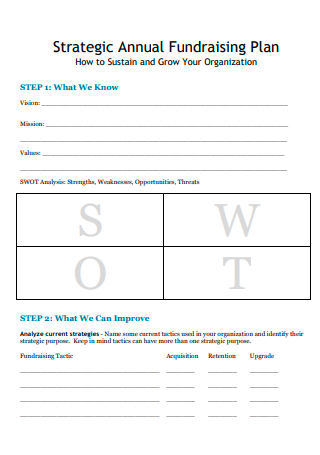
Annual Fundraising Strategic Plan
download now -
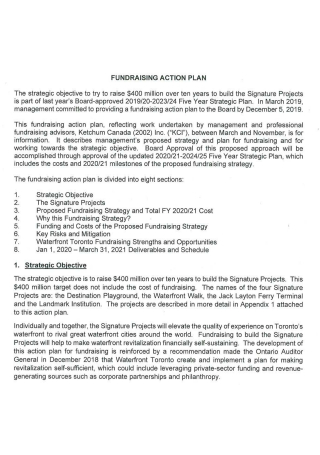
Fundraising Strategic Action Plan
download now -
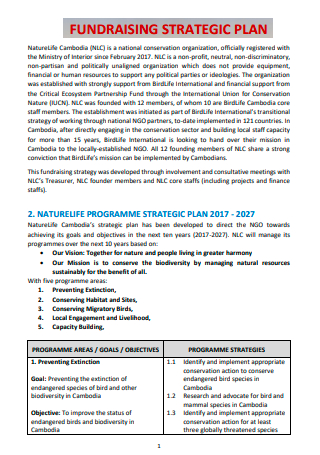
Fundraising Strategic Plan Example
download now -
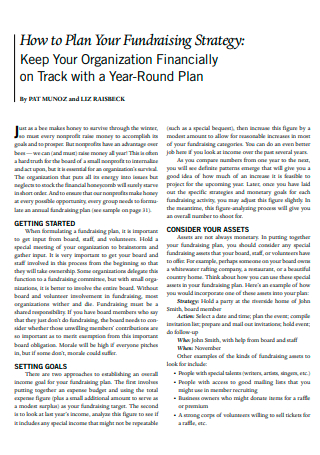
Basic Fundraising Strategy Plan
download now -
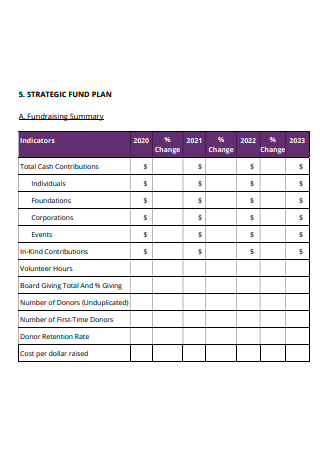
Fundraising Summary Strategic Fund Pla
download now -
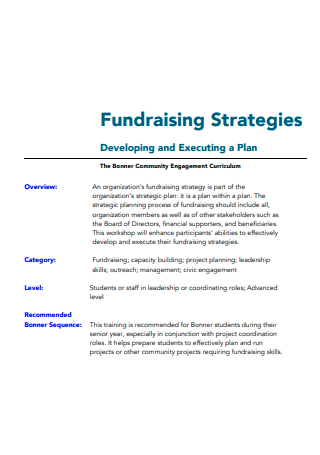
Simple Fundraising Strategies Plan
download now -
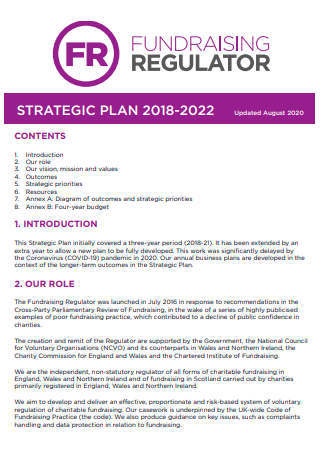
Fundraising Regulator Strategic Plan
download now -
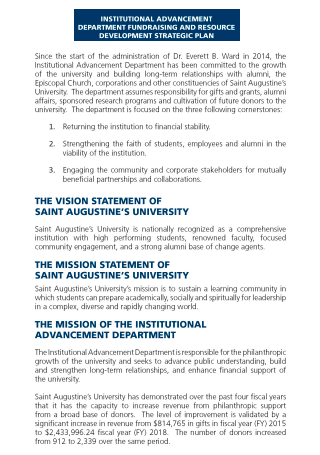
Department Fundraising and Resource Development Strategic Plan
download now -
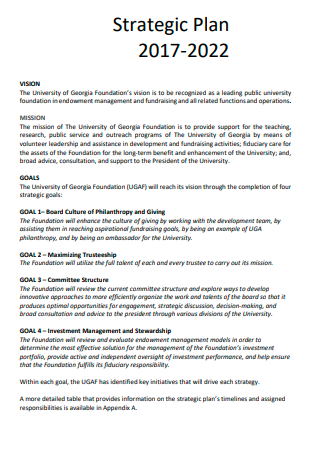
Fundraising Strategic Plan in PDF
download now -
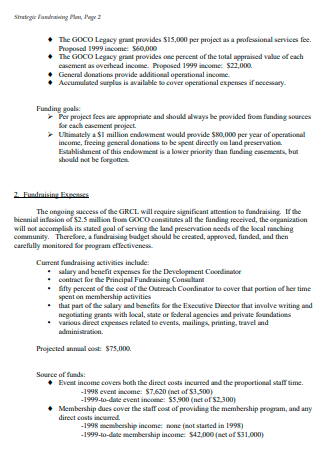
Basic Fundraising Strategic Plan
download now -
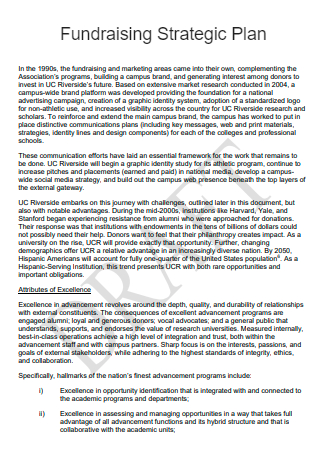
Draft Fundraising Strategic Plan
download now -
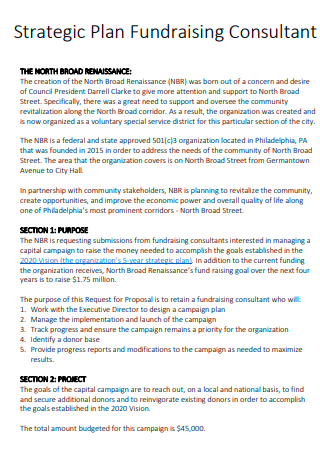
Fundraising Consultant Strategic Plan
download now -

Standard Fundraising Strategic Planning
download now -

Elementary School Fundraising Strategic Plan
download now -
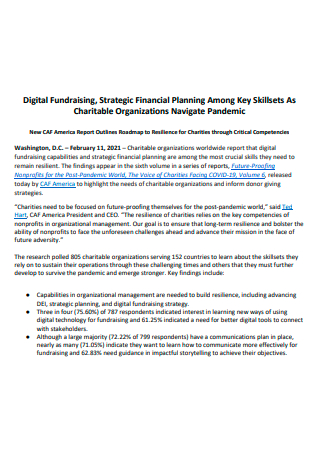
Digital Fundraising Strategic Financial Planning
download now -
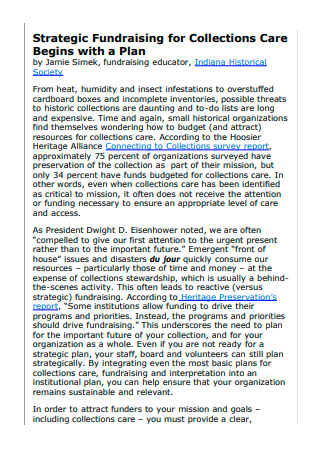
Fundraising For Collection Strategic Plan
download now -
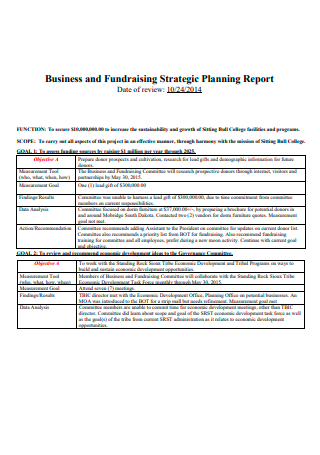
Business and Fundraising Strategic Planning Report
download now -
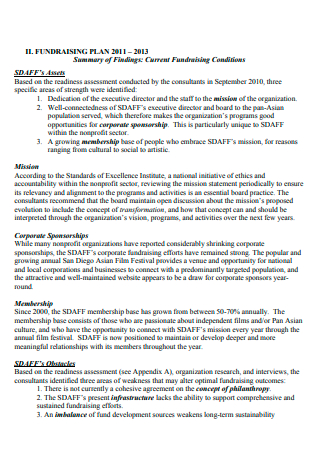
Fundraising Strategic Plan Format
download now -
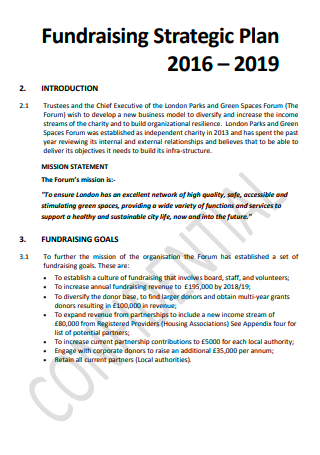
Confidential Fundraising Strategic Plan
download now -
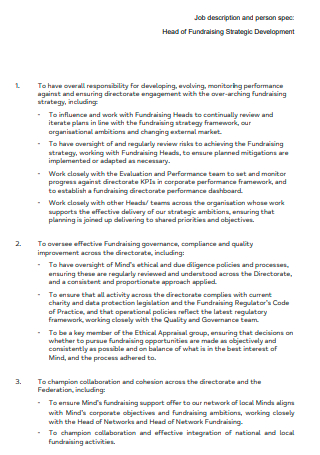
Fundraising Strategic Development Plan
download now -
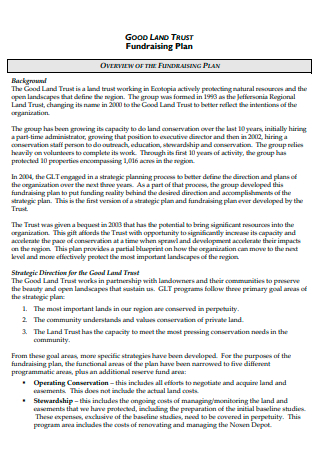
Good Land Trust Fundraising Strategic Plan
download now -
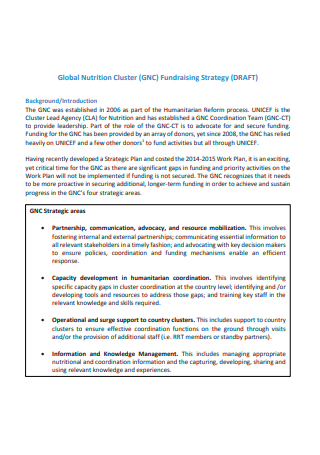
Global Nutrition Cluster Fundraising Strategic Plan
download now -
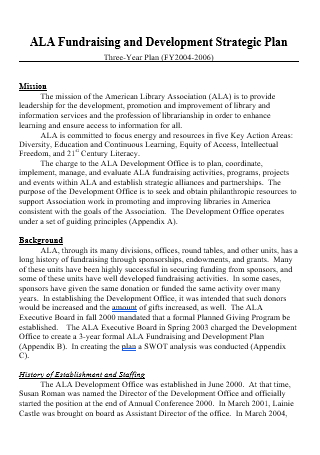
Fundraising and Development Strategic Plan
download now
Fundraising Strategic Plan: What Is It About?
Fundraising is the act of seeking out financial contributions, sponsorships, or donations that are voluntarily given through the engagement of individuals, government agencies, business organizations, and through charitable foundations. Strategic planning is the process by which an organization undertakes, usually a business organization, that involves mapping out action steps in order to accomplish a certain goal. Hence, a fundraising strategic plan is a written documented process by which an individual, a group, or an institution, lays out the actions needed to take in order to raise a certain amount of funds to support a specific cause, usually in the form of a charitable cause, or through non-profit or for-profit organizations. Basically, anything that has to do with coming up with funds for any type of event or activity is considered as fundraising strategic planning.
The Benefits of Fundraising
Aside from being able to raise a certain amount of funds, there are a lot of benefits that stem from fundraising. The act itself is universal, and it reverberates all throughout and to whomever it reaches, that the impact is just something that’s hard to ignore. Just like the ripple effect, the impact of fundraising just grew wider and wider, and before you even knew it, a lot of people would start joining in and start creating their own ripple effect of fundraising. As the founder of a charitable institution, that’s the kind of effect and impact that you’re looking for your institution to have. Read on and find out what are the other benefits that can come out of fundraising.
The Making of a Fundraising Strategic Plan
Newbie fundraising organizers oftentimes found themselves befuddled, not knowing where to begin on how to start looking and raising funds. Even long-time organizers as well would still be caught in that state of conundrum. This would certainly happen if they don’t have a map in hand to guide them and help them focus. What they needed is a plan, and to be specific, a fundraising strategic plan. The good thing about having a fundraising strategic plan is that you have an actual document on your hand to lead you throughout the fundraising process. Similar to a blueprint, it builds out the process structure of the ways you can start looking and soliciting money, and it would also guide you in making sure that action step you’ll undertake is practical and measurable. Here are some of the common elements of creating a fundraising strategic plan.
Step 1: Create the Mission and Vision Statement
All kinds of fundraising should be driven by a purpose, and that should be written down through a mission and vision statement. A mission statement describes the fundraising’s purpose and intent. It can also indicate the cultures and values on which it is founded upon. The goal of having a mission statement is to ensure that all the people involved in the fundraising process are focused and motivated towards achieving the end-goal. A vision statement describes what the fundraising hopes to achieve given a certain period of time. It also paints a picture of what it hopes the result would look like after a fundraising event.
Step 2: Doing External and Internal Analysis
Similar to doing a market analysis, a fundraising strategic plan should also analyze the condition in which the intended fundraising project will be taking place. Demographics classification is one way of doing analysis. It is done by categorizing prospect sponsors and individual donors through age, gender, lifestyle, income, et cetera. Another way is by conducting a SWOT analysis. SWOT stands for the Strengths, Weaknesses, Opportunities, and Threats condition that surrounds a fundraising event. Strengths are those which the fundraising team does well, and the event’s unique aspects that stood out from the other fundraising events.
Weaknesses are those factors that need support or resources, or those factors that need to be improved. The most obvious case is the lack of funds, donors and sponsorships. Another could be the lack of technology and equipment to further the progress of the fundraising activity. Opportunities are those advantages that the organizers could take advantage of, such as social media and advertising campaigns, to further reinforce the fundraising drive. Threats are those conditions that could negatively impact the fundraising, such as extreme weather changes, existence of fundraising competitors, strict local regulations on conducting fundraising events, or strict regulations on doing solicitations, and so on.
Step 3: Strategic Action Plans
You have your goal, you have your mission and vision, and you have your prospective market. Next is to start creating those strategic action plans to raise funds. The action plans should be revolving around the values of a SMART goal, meaning, plans that are Specific, Measurable, Achievable, Relevant, and Time-bound. When planning out, make sure that these two elements are already identified: the fundraising activity date and the communication channels. Communication can be done through all sorts of mediums. It could be through a face-to-face solicitation approach, through digital platforms such as emails, websites, social media, or through the traditional method of letters via post, radio and TV broadcast, posters, and bulletin boards announcements.
The amount targeted to be raised per activity or event should be specified, and should already be totaled according to the estimated amount intended for the purpose of the fundraising. For example, a charity institution dedicated to feeding the hungry planned to have an open house diner for the homeless, offering free lunch and dinner meals that will run for a week. The total cost for the whole operation, including operating expenses, sums to $10,000. What happens then is that the organizer for that free meal event needs to come up with that amount through fundraising activities. The organizer plans to have a car wash drive, a solicitation campaign, and a small marathon event. Funds will be raised through the revenue from the car wash drive, through the individual solicitations given by donors, and through the registration fees gathered from the marathon. The organizer should have a deadline in coming up with the $10,000 amount before the planned open house diner program.
Step 4: Identifying Support and Resources
Part of coming up with strategic plans is to identify the support and the resources needed to implement the plans. In the case for fundraising, support and resources oftentimes come in the form of voluntary contributions, volunteers or sponsorships. Volunteers are those who are willing to put in the time to help out in carrying out the fundraising activities, or those later on who will volunteer in the open house diner program. Voluntary contributions or sponsorships could come in the form of those, for example, who would donate prizes to the marathon event, or sponsor the venue for the open house diner and the car wash free of charge. Resources, aside from the budget, can also come in the form of computers for carrying out the digital marketing campaigns, papers for flyers, printers, food for the open house diner, and so on.
Step 5: Monitor and Review
All strategic action plans should always be monitored and reviewed regularly. This is a way to assess if the plans were successful or not, or how far away the fundraising events are from reaching the desired goals. If needed, plans need to be revised, or else more aggressive strategic action planning should be made as well.
FAQs
What are the other ways to do fundraising?
One way of raising funds is through creating a raffle draw contest. The prizes are usually donated by individuals or business sponsors, the funds are generated from the raffle tickets purchased. Another way is through crowdfunding. Crowdfunding is done, through social media, by way of contributing small amounts of money, incrementally turning to a bigger amount, to support a cause. A popular example of crowdfunding is the GoFundMe website. Hosting big events, such as concerts, is also another way to fundraise. Proceeds from ticket sales become part of the fundraising revenue.
What are the different types of charities?
The following are the most common types of charities: Community, usually aimed for the betterment or improvement of the community situation, such as alleviating poverty, providing shelter for the homeless, food for the hungry, et cetera; Animal protection, which deals with the conservation, protection, shelter for the different wildlife; Environmental, dealing with nature preservation and protection; and international charities, which usually covers the broadest range of causes, from health, to human welfare and services, and can also include disaster relief.
What is a capital campaign?
A capital campaign is a more intensive approach to raise funds, oftentimes a specific substantial amount, for a big project. Deadlines for a capital campaign is often a long period duration, since most projects revolve around asset-building activities such construction, expansion, renovation of building facilities, et cetera.
Fundraising by no means is an easy task, but it can be a manageable task, and certainly can also be an enjoyable one if everyone involved shares the same passion and interest when it comes to the purpose of raising funds. The ripple effect a fundraising can create is unlike any other experience; once charity giving starts, everyone wants to join in. For for-profit organizations that also do fundraising, the result is equally similar, experiencing the feeling of satisfaction, fulfillment and joy is also present. All of that is made possible when you have a good strategic plan, in this case, a good fundraising strategic plan.
We have on our website several strategic planning templates to choose from, but if you’re looking for something that’s for fundraising, we also have that one specifically as well. Our downloadable fundraising strategic plan templates have already been drafted out for you, so that all you have to do is just to fill in the necessary information asked. Download our templates now, and start your journey towards creating successful and fulfilling fundraising strategic plans!
